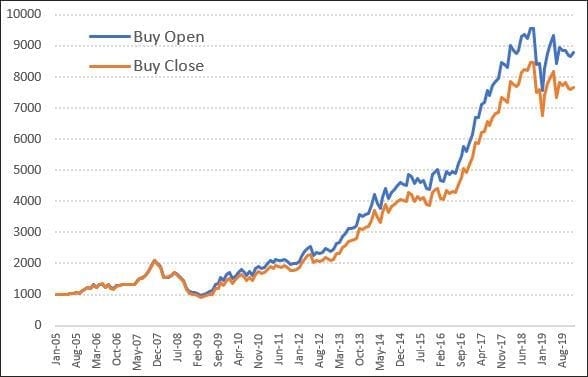
Buy the Open or Buy the Close?
All the strategies outlined in my trading books enter and exit positions at the open. This has prompted a reader question, specifically:
Hey Nick.
The accepted saying in many trading books and articles is that amateurs open the market, but the professionals close it.
I have seen many times a stock open high in the first hour of trading, but gradually retrace throughout the day until 4pm. Emotional inexperienced traders can often pay top dollar at or near the open.
Not sure if you have ever done any testing re buying at the close or open. With Growth Portfolio stocks some subscribers may prefer to buy at the close in order to see if the stock still has upward momentum. -Todd E.
A good question and an interesting observation. But like any observation we need to put it to the test to ensure we’re not falling for some type of recency or confirmation bias.
For this test we’ll use a simple momentum strategy on the Russell-1000 universe. Momentum in this case was measured using a 200-day rate of change. No other filters are used.

Why Buy on an Open?
The evidence suggests that buying on open has a slight edge than buying on close. I tested across various strategies in both the Australian and US markets and whilst the edge flipped between the two, it was only ever marginal one way or other.
However, there are two other reasons why I tend to use the open. The first is that, in Australia, the market uses an opening auction. Basically, an algorithm is used to determine the volume on the buy side versus the volume on the sell side, as well as the prices at which they have been placed. This algorithm results in an official ‘auction’ price, which is the price at which the stock opens.
The benefit is twofold; it’s one of the most liquid times of the trading session so slippage is limited, and secondly, it 100% ensures my real time results match the backtest result.
The other reason we employ the open auction is to simplify execution. Signals are generated after the close allowing some 18 hours to place orders for the next session. No screen watching and no special order requirements needed.
The easier you can execute the strategy, the more likely you’ll continue to follow it.


